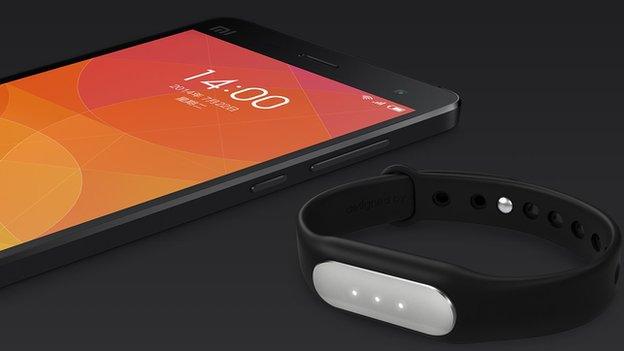Jawbone Up3 promises more accurate sleep-tracking data
- Published
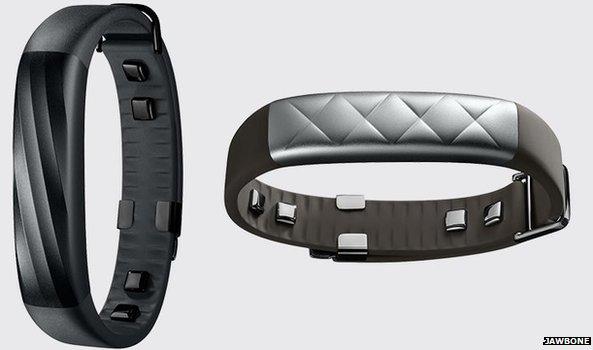
The Up3 features metal-covered sensors that rest against the skin
Jawbone has a new wristband that uses a relatively unusual technique to provide feedback about sleep patterns.
The Up3 measures the wearer's heart rate via metal-covered sensors that protrude from its underside to press against the skin.
This contrasts with the approach of rivals that combine infrared and visible-light LEDs with photosensors, which are more battery-intensive.
However, it faces further competition from more feature-laden smartwatches.
The Up3 wristband uses a technique called bioimpedance to track its owner's pulse. This involves passing an imperceptible electrical current through the body to measure its resistance to the effect.
The process is already used by several specialist medical devices to measure heart rate, body fat, fluid levels and other body composition readings, and has featured in a few consumer devices such as Fitbit's Aria weight scales.
However, Jawbone is pioneering its use in a mass-market wristband. It follows the firm's takeover of Bodymedia, a Pennsylvania-based company that had been carrying out research into the technology.
"Because bioimpedance requires significantly less power compared to optical sensors for the same level of accuracy, we can deliver a smaller form factor and longer battery life," said Jawbone of the innovation.
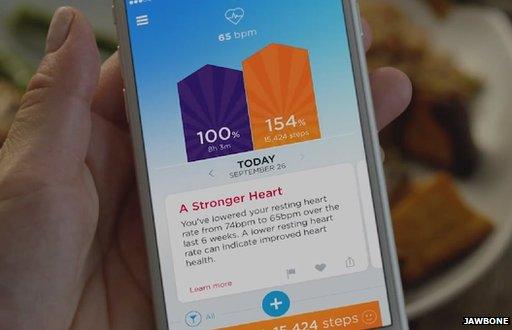
The Up3 will take heart rate readings when the owner wakes up to track changes
Initially, the sensors will be able to accurately measure the Up3 owner's heart rate only while they are resting and just after they wake up, but the company intends to extend their use with a software update to other times of the day.
One feature that will be offered at launch is the ability to continuously record a user's pulse when they are asleep, to show when they shifted between the REM (rapid eye movement) stage - when their heart rate should be fairly irregular - and deep sleep, when the rate should be more steady.
Jawbone believes this will provide more accurate readings than other devices that rely on accelerometer sensors to deduce changes via body movements.
To make use of the data, Jawbone is also providing software to measure the user's response to suggestions - including late-night showers and cooling the bedroom - to determine which best help the wearer get a better night's rest.
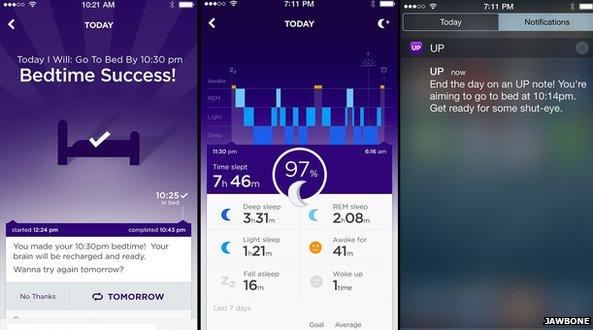
Jawbone's SmartCoach software will help Up3 owners make sense of their sleep data
"There are a lot of people out there who feel they don't get enough sleep or feel they are stressed and want to monitor their levels from a healthy lifestyle standpoint," said Tim Shepherd, a wearable tech specialist at the market research firm Canalys.
"We are seeing a surge in interest in people getting data on their lifestyles, but the important thing is to offer not just data but a means of analysing it, graphing it and telling you what it means, and vendors still need to have to prove they can be relevant."
The Up3 costs £150, is waterproof up to depths of 10m (33ft), and promises up to seven days' battery life between charges.
Unlike some rivals, however, it lacks a display and relies on a connected smartphone, tablet or PC to provide feedback, beyond a few LEDs that signal the mode it is in.
Crowded market
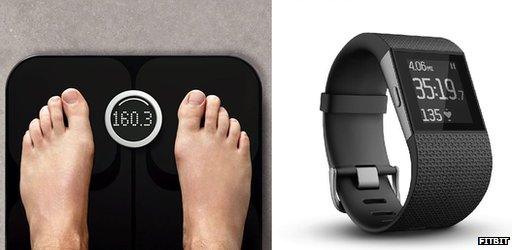
Fitbit's Aria scales use bioimpedance sensors, but its new Surge fitness tracker has an optical heart-rate sensor
Jawbone is already the world's second best-selling fitness band manufacturer, behind only Fitbit, according to Canalys.
But the market is becoming more crowded, with Microsoft the latest of the major tech firms to unveil a device of its own.
Its Band features 10 different kinds of sensors, including an optical heart rate component that is capable of being used during activities.
Intel is also putting its Basis Peak fitness and sleep tracker on sale this month, which promises to automatically detect users' sleeping cycles.
And Fitbit has released new devices of its own ahead of Christmas shopping season, including the Surge, which integrates a GPS part to track the wearer's location, allowing it to offer more accurate data about their runs.
The sector also faces increased competition from smartwatches, which are capable of running a wider range of apps.
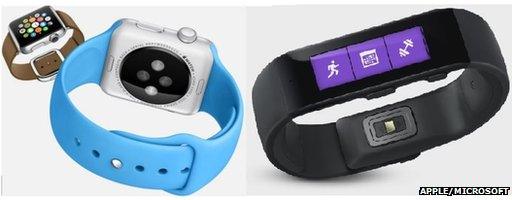
The Apple Watch and Microsoft Band both use optical heart rate sensors
Motorola, LG and Samsung are among those with new Android Wear devices, while Apple has promised to launch its Watch next year.
"There are going to be consumers who will purchase a smartwatch and will therefore not need to buy a separate device to activity track," said Mr Shepherd.
"But there is still plenty of growth potential for dedicated devices that are priced aggressively.
"And almost invariably you have to take a smartwatch off to charge at night.
"An activity-tracking device is more capable of offering sleep-tracking data because of its longer battery life, plus it's smaller and lighter and therefore more comfortable to wear through the night."
- Published30 October 2014
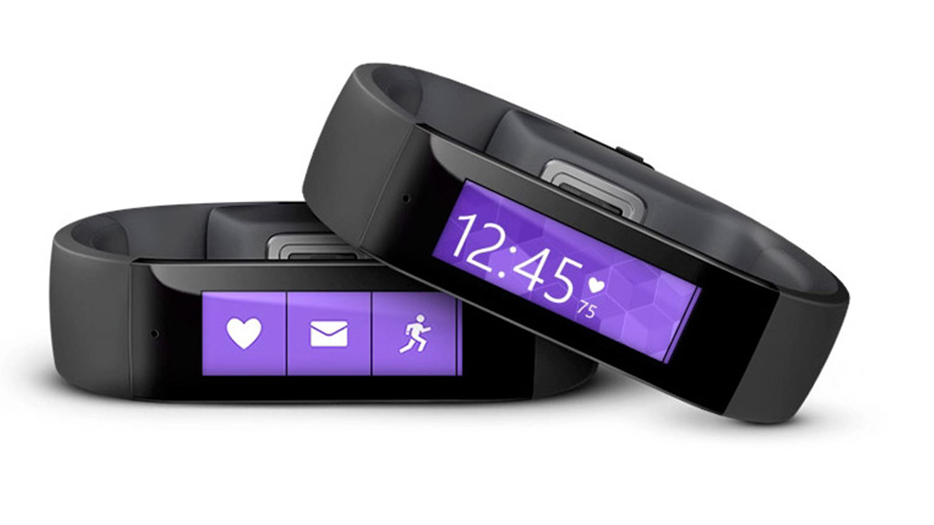
- Published29 October 2014

- Published22 July 2014
